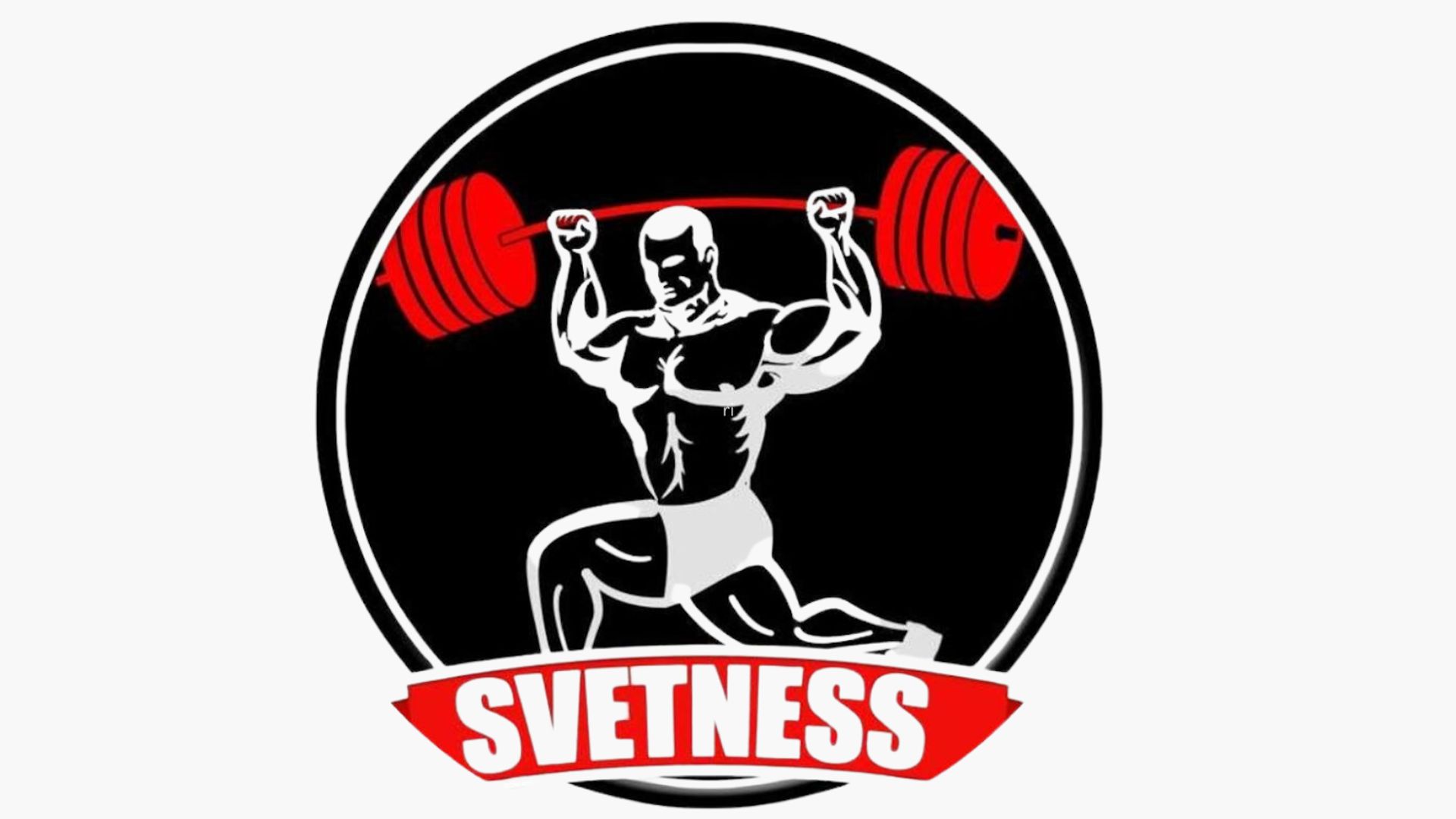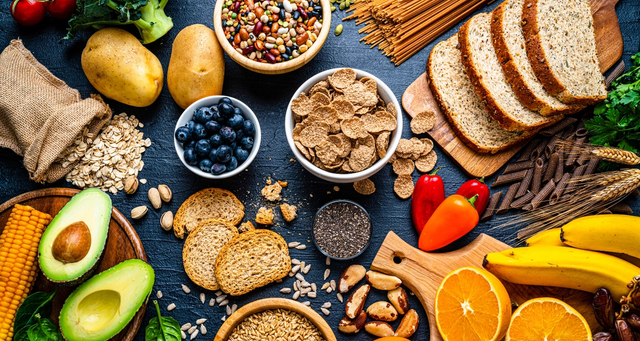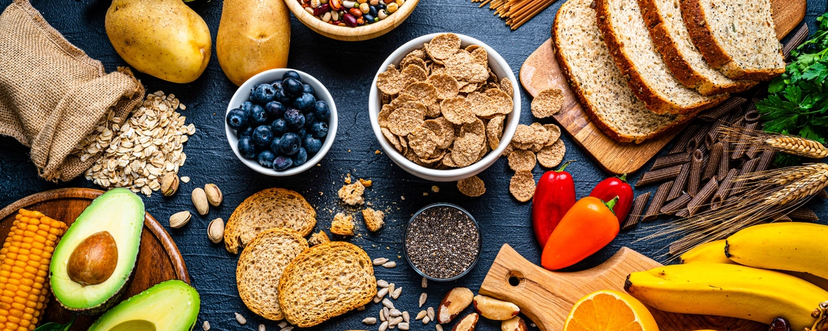
What Is the 'Blue Zone Diet' and Does It Work?
Curious about the longevity secrets of the world's healthiest communities? This guide breaks down the renowned Blue Zone diet and whether it actually works for health, vitality, and long-term wellness.
You may have heard about places where people live well into their 90s or even past 100. Moreover, these people aren’t just surviving; they’re thriving!
These regions, known as Blue Zones, have gained global attention for their remarkable rates of longevity and low incidence of chronic disease. But what's their secret? And more specifically, what does their diet look like?
Enter the Blue Zone diet: a way of eating inspired by the daily habits of those long-living communities. It’s not a commercial plan or trendy cleanse.
It’s based on real, everyday meals eaten by people in places like Okinawa (Japan), Sardinia (Italy), and Nicoya (Costa Rica), and it reflects not just what they eat, but how, when, and why they eat.
In this blog, we’ll take a closer look at the origins of the Blue Zones, what makes their diets unique, and whether this way of eating could work for you. We’ll also touch on practical tips for adopting some of their habits into a modern lifestyle without feeling like you need to move to an island ASAP.
What Are the Blue Zones?
The term "Blue Zones" comes from a 2004 demographic study led by explorer and journalist Dan Buettner, in collaboration with National Geographic and longevity researchers.
They identified five areas around the world with exceptional longevity rates and remarkably low rates of chronic diseases like heart disease, cancer, and diabetes. These five zones are:
- Okinawa, Japan – Home to some of the world’s longest-living women and a culture deeply rooted in purpose and community.
- Sardinia, Italy – Particularly in the mountainous regions, men here often live into their hundreds, supported by a diet rich in beans, greens, and wine.
- Nicoya Peninsula, Costa Rica – Known for strong family ties, a sense of purpose (“plan de vida”), and a natural diet high in plant-based foods.
- Icaria, Greece – A Mediterranean island where residents routinely live into their 90s, eating a diet high in olive oil, vegetables, and herbal teas.
- Loma Linda, California – A community of Seventh-day Adventists who follow a mostly vegetarian diet, abstain from alcohol and smoking, and prioritize faith, rest, and service.
Though culturally diverse, these populations share common lifestyle traits, particularly regarding how they eat, move, and engage with their communities. The Blue Zone diet is a distillation of those shared eating habits and food philosophies.
Key Principles of the Blue Zone Diet

While there’s variation in local ingredients and meal traditions, the Blue Zone diet centers around several consistent principles. It’s a nutritional approach that emphasizes simplicity, balance, and eating with intention.
1. Eating Mostly Plant-Based Meals
Plant-based eating is the foundation of the Blue Zone way of life.
Across all five zones, meals are centered around vegetables, legumes, fruits, and whole grains. Although animal products are occasionally included, they are far from being the main focus. In fact, less than 5% of daily calories in Blue Zone diets come from animal-based foods.
Plants provide antioxidants, fiber, vitamins, and phytonutrients that support overall health and reduce inflammation. Staples like sweet potatoes in Okinawa, lentils in Sardinia, and black beans in Nicoya frequently appear in meals, often prepared using traditional, time-tested recipes.
2. Using Beans as a Protein Source
Beans aren’t just a side dish in the Blue Zone diet. On the contrary, they’re often the main event.
Lentils, black beans, chickpeas, soybeans, and white beans are consumed almost daily in all five zones. These legumes provide a powerful combination of plant-based protein, fiber, and complex carbohydrates, promoting stable blood sugar levels and sustained energy.
Including beans in nearly every meal helps reduce reliance on animal protein while still meeting nutritional needs. Combined with whole grains or starchy vegetables, they provide complete protein that supports muscle maintenance and metabolic health.
3. Limited Access to Processed Foods
Ultra-processed foods, i.e., those loaded with additives, preservatives, and refined sugars, are almost nonexistent in traditional Blue Zone diets. Meals are made from scratch using fresh, seasonal ingredients, often sourced from local gardens or markets.
This way of eating naturally limits the intake of added sugars, unhealthy fats, and empty calories. Even bread is traditionally made with whole grains and natural fermentation methods (like sourdough), and desserts tend to be fruit-based rather than sugar-laden.
4. Small Portions and Mindful Eating
People in Blue Zones tend to follow natural rhythms when it comes to eating. Meals are rarely rushed.
For example, in Okinawa, the cultural mantra "Hara hachi bu", which means "Eat until you are 80% full", is a mindful way of preventing overeating and promoting healthy digestion.
Meals are often shared with family or community members, which reinforces social connection and reduces the likelihood of emotional eating. Food is enjoyed slowly and intentionally, without screens or distractions.
Ultimately, these habits support both mental and digestive well-being.
5. Moderate Alcohol Consumption
In most Blue Zone regions (with the exception of Loma Linda), moderate alcohol consumption is common. Typically, it’s one to two small glasses of red wine enjoyed with food and in the company of others.
However, this inclusion of alcohol isn’t about drinking for the sake of drinking. On the contrary, it’s about ritual and relaxation. Red wine, particularly varieties rich in antioxidants like Cannonau from Sardinia, may support heart health in small amounts.
Still, alcohol is never a requirement, and those who abstain can still reap the benefits of the Blue Zone lifestyle.
6. Minimal Added Sugar
Refined sugar is not a staple in the Blue Zone diet.
Sweetness comes from natural sources like fruit, honey, or small portions of handmade baked goods. Processed sugary drinks and packaged snacks are rare.
Reduced sugar intake contributes to lower rates of insulin resistance and metabolic syndrome. It also helps maintain dental health and a stable mood, a benefit that becomes more important with age.
Potential Benefits of the Blue Zone Diet

Adopting the Blue Zone diet offers more value than adding years to your life, although that’s certainly a plus. It’s also about improving the quality of those years.
The combination of nutrient-rich foods, low inflammation, and sustainable habits offers a wide range of benefits, both immediate and long-term.
Improved Longevity
Each Blue Zone boasts a high percentage of centenarians: people living past 100 years old. Their diets are a significant contributor to this longevity. By limiting processed foods and focusing on nutrient-dense, anti-inflammatory meals, these communities create a biological environment conducive to aging well.
What’s more, Blue Zone residents tend to remain active and independent well into old age, suggesting that the diet not only extends life span but also health span (the number of years lived without major illness or disability).
Reduced Risk of Chronic Diseases
Numerous studies confirm that diets emphasizing plants, fiber, and healthy fats can significantly lower the risk of heart disease, type 2 diabetes, stroke, and certain cancers. The Blue Zone diet consistently checks those boxes.
For example, Adventists in Loma Linda have significantly lower rates of hypertension and cholesterol than the average American. In Okinawa, cases of dementia and cancer remain among the lowest in the developed world.
Better Digestion and Gut Health
A high-fiber diet feeds the beneficial bacteria in your gut, supporting a healthier microbiome. Better gut health then strengthens immune function, improves nutrient absorption, and reduces inflammation throughout the body.
The abundance of legumes, vegetables, fermented foods (like miso and sourdough), and prebiotic-rich plants creates an ideal environment for optimal digestion. This may explain why residents of Blue Zones often report fewer issues with bloating, irregularity, or digestive discomfort.
Weight Stability Without Calorie Counting
Rather than focusing on strict portion control or tracking every bite, the Blue Zone diet encourages intuitive eating.
Meals are naturally lower in calories thanks to high-fiber ingredients and lower energy density, meaning you can eat satisfying portions without overeating.
Combined with physical activity and low stress levels, this approach supports long-term weight maintenance. Many Blue Zone residents maintain healthy weights without ever stepping on a scale.
Enhanced Mental Clarity and Mood
Nutrient-rich diets have been increasingly linked to brain health and emotional well-being.
The Blue Zone's emphasis on whole foods, omega-3 fatty acids (from nuts and seeds), antioxidants, and low sugar intake may reduce cognitive decline and protect against mood disorders.
In addition, the act of sharing meals and slowing down fosters a sense of calm and connection, both of which contribute to mental wellness. Rather than perfection, the focus on balance and simplicity further supports a stable, grounded mindset.
Does the Blue Zone Diet Work for Everyone?

The Blue Zone diet isn’t about being perfect or following a rigid formula. Instead, it’s about creating sustainable, supportive food habits that align with your lifestyle and values.
Not every person will have access to the same ingredients, and some may have dietary restrictions that limit certain food groups. And that’s okay.
The strength of this approach is in its flexibility. The core principles, which emphasize plants, limiting processed foods, and eating mindfully, can be adapted to different cultures, budgets, and preferences.
Regardless of whether you live in an urban apartment or a rural town, you can still apply Blue Zone logic: eat whole foods, share meals with others, and enjoy food without guilt.
Even modest changes, like replacing meat with legumes once a week or cutting back on refined sugar, can create positive shifts in your health and energy.
How to Incorporate Blue Zone Eating Into Your Lifestyle

You don’t need to move to Greece or give up your favorite meals to embrace the Blue Zone diet. The key is to integrate small, meaningful habits that move you closer to the same nutritional balance.
Here are some extended suggestions:
- Cook from scratch more often. Prioritize simple meals with a few whole ingredients. Stir-fries, stews, and salads are easy places to start.
- Always keep legumes in your pantry. Lentils, black beans, and chickpeas are versatile, affordable, and work in soups, tacos, pastas, or grain bowls.
- Eat with others whenever possible. Create space for shared meals, even if it’s once or twice a week. This habit builds social connection and encourages slower eating.
- Add more greens to your plate. Leafy greens, cruciferous vegetables, and seasonal produce can transform even basic dishes into nutrient powerhouses.
- Limit meat or leave it for special occasions. If you eat animal products, treat them as a side dish, not the main event.
- Honor your hunger cues. Eat slowly and stop before you feel full. Enjoy the process of eating, not just the result.
These steps don’t require radical change. They encourage consistency, curiosity, and respect for food as nourishment and ritual.
Why Diet Alone Isn’t the Whole Story

Longevity isn’t just about what’s on your plate. Blue Zone residents also benefit from low stress levels, strong social networks, and daily movement built into their lives, not as a chore, but as a norm.
They walk, garden, cook, and care for others as part of their daily routines. Physical movement is gentle, regular, and lifelong. And this is where personalized support, such as individual weight loss training, can be particularly beneficial.
If you’re unsure how to create a routine that fits your body and schedule, working with a fitness professional, especially one who trains with you in your own environment, can help bridge the gap.
For example, an in-home trainer can help you stay consistent, reduce overwhelm, and build habits that align with your goals, whether that’s eating better, moving more, or simply feeling stronger and more supported in daily life.
Final Thoughts
The Blue Zone diet is more than a collection of foods. It’s a mindset. It celebrates tradition, simplicity, and the deep relationship between food, community, and well-being.
Maintaining a Blue Zone diet doesn’t require perfection, but it does require intention.
By gradually shifting toward whole foods, plant-based meals, and slower, more conscious eating, you can tap into many benefits supporting longevity and vitality.
And when combined with other wellness practices, like daily movement, stress reduction, and strong social ties, this way of eating becomes a powerful, lasting approach to health that can adapt to any lifestyle.
Frequently Asked Questions
Is the Blue Zone diet vegetarian or vegan?
Not entirely. While the diet is mainly plant-based, small amounts of meat, dairy, and eggs are still consumed in moderation. It’s not strictly vegetarian or vegan, but animal products play a much smaller role than typical Western diets.
Can I follow the Blue Zone diet if I have food allergies?
Yes, but you may need to make some adjustments. If you’re allergic to legumes, gluten, or certain nuts, focus on the plant-based foods that work for you, such as vegetables, fruits, rice, and seeds. It’s about adapting the core ideas to your needs.
How soon will I notice benefits from changing my diet?
Some people feel improvements in digestion, energy, and mood within a few weeks. Long-term benefits, like reduced disease risk, take more time but build steadily with consistent habits.
Do I have to eliminate meat completely?
No. The Blue Zone diet occasionally includes meat, typically once or twice a week, and in small amounts. The emphasis is on moderation and choosing high-quality, unprocessed options when possible.
Start your Svetness journey today
Get a free consultation and see how our trainers can transform your wellness journey.





